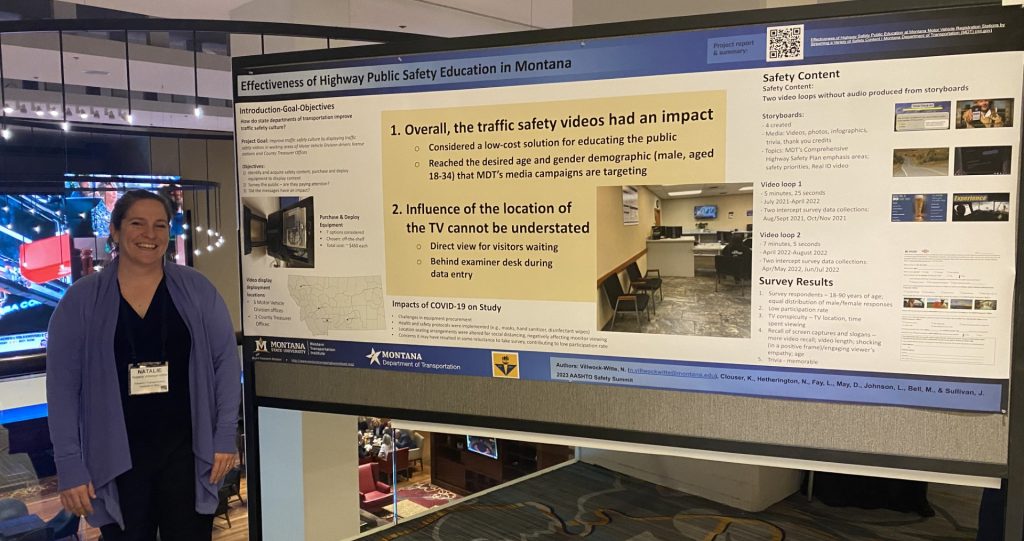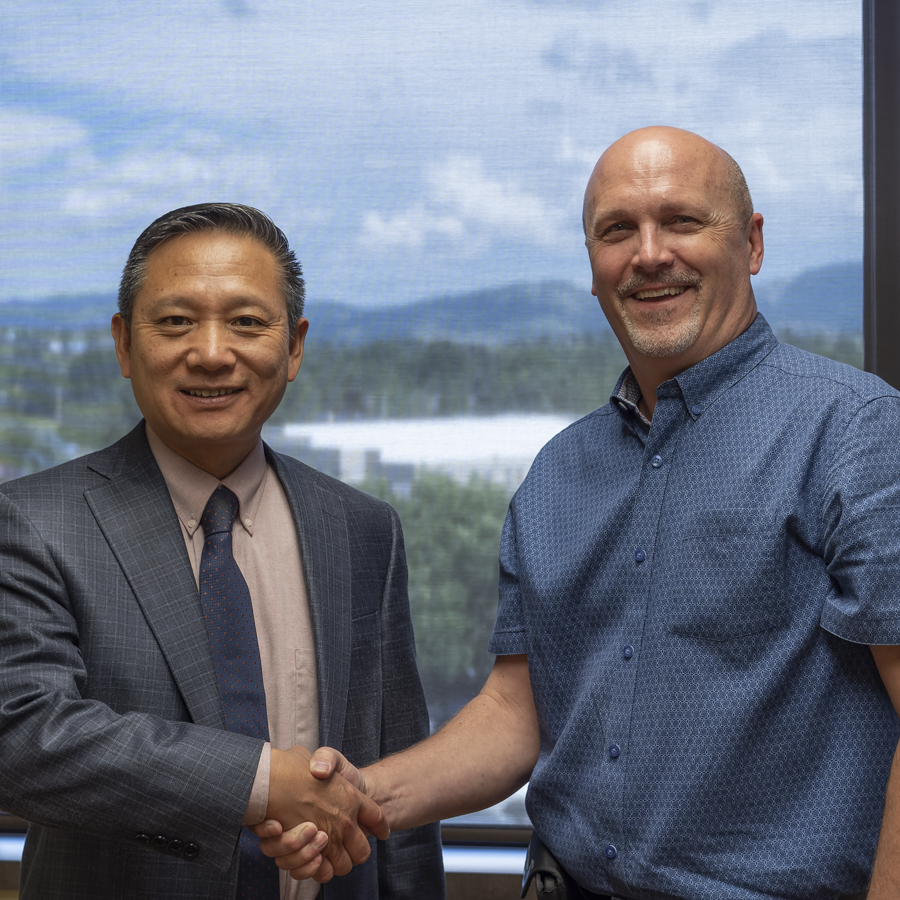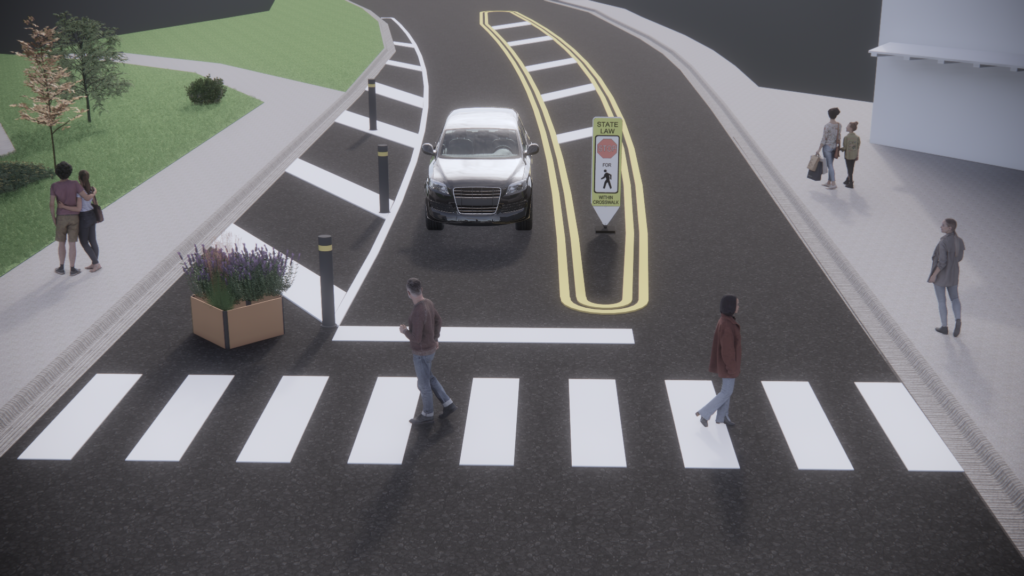Public Lands Transportation Fellows Explore Federal Opportunities, Meet, and Present at TRB 2024

The Public Lands Transportation Fellows (PLTF) program is a collaboration between WTI, the National Park Service, and the US Fish & Wildlife Service, that provides outstanding graduate students with transportation-related fellowships and long-term job opportunities in federal land management agencies. WTI is particularly proud of this program, its participants, and their creativity and problem-solving acumen. […]
WTI Employees Recognized for Years of Service
Every October, Montana State University hosts the Milestones in Service Award banquet to recognize employees who reached five-year employment increments during the previous fiscal year. This year’s event included three WTI employees celebrating significant work milestones. Of special note are Susan Gallagher, WTI’s Education & Workforce Program Coordinator, and Marcel Huijser, Senior Research Ecologist, for […]
Natalie Villwock-Witte Presents at 2023 AASHTO

Natalie Villwock-Witte presented a poster at the American Association of State Highway and Transportation Officials (AASHTO) 2023 Safety Summit in Kansas City, October 17-19. The event brought together state DOT leaders, management, and practitioners, as well as transportation professionals in the public, private, non-profit, and academic sectors to discuss opportunities for expanding the incorporation of safety […]
Rob Ament Retires After 18 Years with WTI
We are both sad and honored to announce that Rob Ament has retired after 18 years with WTI. Rob is one of the early pioneers of our Road Ecology program and, as Program Manager, has grown it into the world-renowned focus area it is today. Having spent his childhood exploring the Mississippi River, Rob developed his love of ecology […]
WTI Director Plans Research Expansion

As I am entering the second month as WTI director, I have learned a lot about the organization, Montana, and the rural transportation improvements needed in the region. I am happy to report that WTI and partners submitted our proposal for the USDOT Region 8 University Transportation Center (UTC). In addition, Montana Department of Transportation […]
David Kack Hands WTI Director Role to Kelvin Wang

A word from our staff: As Montana State University prepares for the start of the Fall semester, August is also bringing change to WTI as we welcome a new director. As many of you may know, David Kack and his family have started a new life chapter in Tennessee, and while David will continue remotely […]
New IUNC Report from Rob Ament and Tony Clevenger
Rob Ament, the Road Ecology Program Manager at WTI, Dr. Tony Clevenger, a WTI Senior Research Scientist, and their colleague Dr. Rodney van der Ree of Australia, are the lead editors of a new technical report published by the International Union for Conservation of Nature (IUCN) and its World Commission of Protected Areas. Titled “Addressing […]
Project Co-Led by Laura Fay Wins AASHTO Award
WTI is proud to announce that a National Center for Atmospheric Research (NCAR), WTI, and Aurora Pooled Fund study relating weather conditions and roadway friction measurements has received the High Value Research award from the American Association of State Highway and Transportation Officials (AASHTO). Led by NCAR’s Gerry Wiener, with WTI’s Cold Climate Operations & […]
WTI Researchers Improving Roadway Safety in Big Sky

Work is moving forward on a collaborative project between WTI and Big Sky Community Organization (BSCO) on an Ousel Falls Road traffic calming and place-making project. Organizers believe that the temporary infrastructure, funded through the Building Active Communities Initiative (BACI) and the Big Sky resort tax, will increase safety and connectivity for pedestrians and cyclists […]
IN THE NEWS: WTI Researcher Plans Traffic Calming Project in Big Sky, TPF-5 Sparking Public Interest
Matt Madsen Interviewed in Explore Big Sky WTI Researcher Matt Madsen, along with the Big Sky Community Organization (BSCO), is spearheading a traffic calming project in the heart of Big Sky, Montana. Madsen describes the upcoming project in the Explore Big Sky article “Traffic calming project set for Ousel Falls Road,” as well as participation […]
